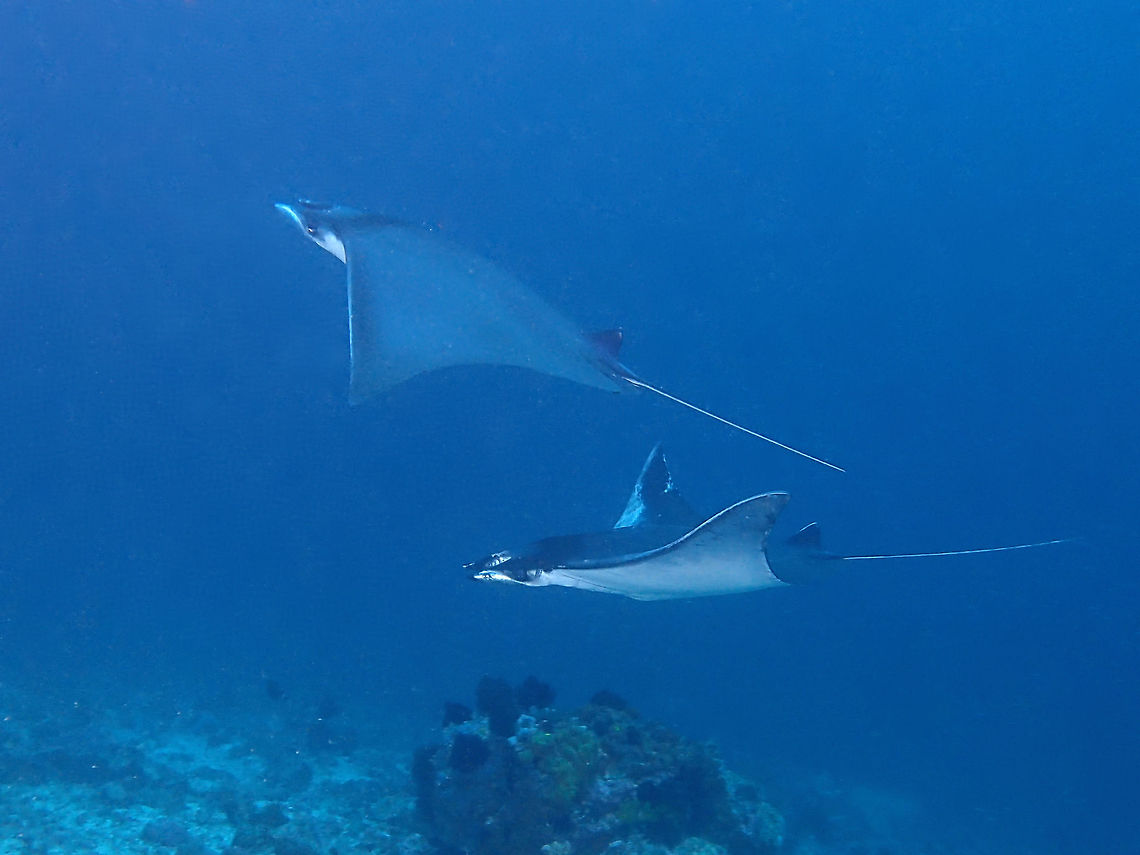 Promoted
Promoted
The Devils
Second time to see huge school of this Mobula/Devil Rays, in the hundreds and on several dives/occasions. Incredible experience indeed.
Not very sure which species of Mobula Rays this are as they are of medium size around 2 - 2.5 meters, too small for Mobula mobular species (up to 5 meters wing span) and too big for the Mobula eregoodootenkee (Pygmy Devil Ray) which are usually up to 1 meter wing span and more brownish in colour.
There is one undescribed Mobula, called Borneo Devilray, but can't be certain if its the same - mentioning it as Lombok is not too far from Borneo.
Mobula is a genus of ray in the family Myliobatidae (eagle rays). Their appearance is similar to that of manta rays, which are in the same family. Species of this genera are often collectively referred to as "devil rays", "flying mobula" or simply "flying rays", due to their propensity for breaching, sometimes in a spectacular manner. The devil fish can attain a disc width of up to 5.2 m (17 ft) and can probably weigh over a ton, second only to the Manta species in size. Despite their size, little is known about this genus, much of it being from anecdotal accounts.
Video of the big school of them can be seen here :
No species identified
The species on this photo is not identified yet. When signed in, you can identify species on photos that you uploaded. If you have earned the social image editing capability, you can also identify species on photos uploaded by others.

comments (3)
Not familiar with anyone who could verify the species/ID.
They could also be Mobula japanica - Spinetail mobula which has also been reported from Bali/Lombok.
I can upload the video the later. Posted 9 years ago
Do check it out ;) Posted 9 years ago